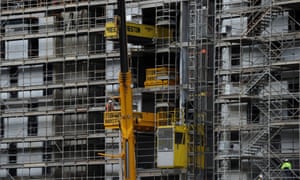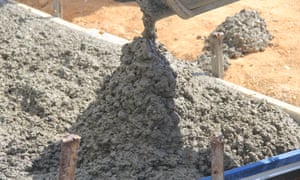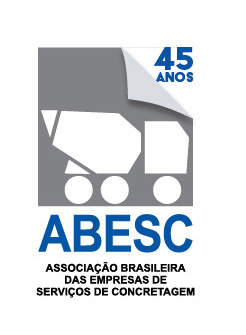Concrete has a crushing environmental impact but Australian-led innovations have the potential to dramatically reduce emissions from its production

They look like any other footpath snaking across Queensland’s James Cook University (JCU) campus. Yet the two concrete paths leading up to the university’s new Science Place building and the Douglas campus buildings may hold the key to one of the construction industry’s most pressing environmental questions.
In December last year, JCU PhD student Shi Yin won the manufacturing, construction and innovation category award at the 2015 Australian Innovation Challenge for his research into using recycled plastic for reinforced concrete applications.
Yin’s research helped Queensland-based company Fibercon to develop Fibercon RMP47, a concrete reinforced with recycled plastic. The footpath at the Science Place site was constructed using the new material to demonstrate the potential capabilities of the building product, and the university was so impressed with it that it commissioned the Douglas campus path.
Dr Rabin Tuladhar, senior lecturer at the university’s college of science, technology and engineering, supervised Yin’s work. He says using recycled plastic in reinforced concrete has great environmental savings.
Concrete is the most widely used synthetic material in the world but also one of the most environmentally unfriendly. Its manufacture alone is responsible for about 5% of global carbon dioxide (CO2) emissions.
It’s a surprisingly simple material, usually made from approximately 10% Portland cement, 3% supplementary cementitious inclusion (for example fly ash or ground granulated blast furnace slag (GGBS)), 80% aggregates (such as gravel and sand), and 7% water.
But nearly every aspect of its production – from mining and transporting the raw materials, to heating them to over 1,400°C (often using fossil-fuel-based energy) in a kiln, and the subsequent chemical process of turning limestone into small rocks of cement called clinker – releases huge amounts of carbon dioxide.
In fact, the International Energy Agency (IEA) estimates that for every kilogram of cement produced, around the same amount of CO2 is released into the atmosphere.
In Australia, the cement industry produces more than 10m tonnes of cementitious materials every year, releasing around 7.2m tonnes of greenhouse gas emissions into the atmosphere. And with population increases and pressure on housing stock, the use of concrete is only going to increase.
Innovators are looking to improve the environmental credentials of concrete. They have already come up with advances like “self-healing” concrete, “concrete-on-a-roll”, concrete printing, and pollution-absorbing cement. Now Australian scientists and businesses are making headlines for their breakthroughs in green concrete.

Construction company Wagners has taken the brief literally and created earth friendly concrete (EFC) that is green on the inside. The colour is a coincidental side effect of using blast furnace slag – an industrial waste from steel production – along with fly ash, a waste from coal power generation, instead of Portland cement.
Romilly Madew, CEO of the Green Building Council of Australia, says replacing up to 40% of cement content with these types of materials can be up to 30 times less greenhouse-gas intensive than Portland cement.
However, Wagners’ EFC replaces 100% of the Portland cement content, reducing carbon emissions by an estimated 90%, while largely being a similar cost to that of Portland cement-based concrete
The green concrete has been used to construct the apron, taxi-way and turning node at Brisbane’s Wellcamp airport, billed as “the greenest airport in the world” for reportedly having the largest application of modern geopolymer concrete in the world. It’s estimated that using EFC instead of Portland-based concrete here has saved more than 6,600 tonnes of carbon emissions.
The JCU research team is also continuing to seek out ways to reduce the amount of Portland cement in concrete. They are currently researching whether pitchstone dust, a fine particle waste from pitchstone mining in North Queensland, can be used to replace up to 30% of cement in concrete.
“We are still at the research state for this,” says Tuladhar, “and we haven’t been able to get into the commercial side of it yet because there are a lot of challenges to get into the industry. These include overcoming concerns over new materials, and convincing clients and contractors to use it. There are also challenges to convincing concrete plants to make modifications to their existing set up to add this material.”
Wagners’ EFC manager, Tom Glasby, adds that building standards are not currently set up to support increased uptake of cement-free concrete, as “all current Australian and international standards, as well as government building specifications, require minimum quantities of Portland cement in concrete for general compliance”.
So until building standards catch up with these newer technologies, there are steps to make even Portland-based concrete greener.
These include using old concrete from demolished buildings as aggregate, which would reduce emissions and save the amount of construction waste sent to landfill. Another option is replacing coal with tyres and biomass fuels to heat cement kilns to create the concrete-component clinker, which could reduce carbon emissions by up to 25%.
Given the significant environmental impact of the estimated 188,000 homes to be built every year to house 36 million people living in Australia by 2050, these are problems that need to be solved.
Source: The Guardian






